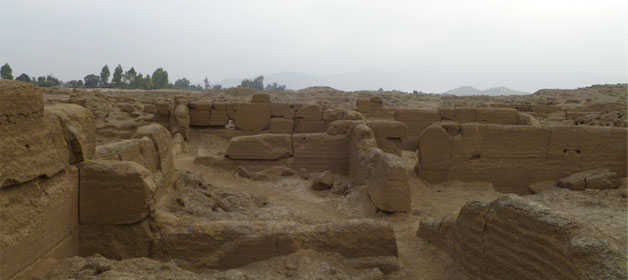Table of Contents
Cajamarquilla, the immense mud city. At first glance it looks like a labyrinth of earthen walls, but it is formed by several pyramids and walled enclosures.

Located on the banks of the Huaycoloro Creek, in the district of San Juan de Lurigancho, province of Lima.
Cajamarquilla served as an important commercial center during the so-called Lima culture and later during the Ichsma culture. It began to be built towards the end of the Early Intermediate period and was vacated at the end of the Late Intermediate, although it seems to have been unoccupied during the Middle Horizon; the cause of climatic changes and natural disasters (earthquakes, among others) led to its abandonment several hundred years before the Spanish conquest.
Cajamarquilla is a large city with buildings of both rectangular and pyramidal shape built with adobe; it is possible to observe the remains of temples, wide streets, ceremonial squares, terraces, cemeteries, subway grain silos, canals and numerous enclosures and buildings whose use is not known and that are quite deteriorated by earthquakes. Ceramic remains have been found that correspond to phases 7, 8 and 9 of the Late Lima period. Most of them are pots, plates and pitchers for food preparation and storage.
The city was founded between 600 and 730 A.D., during the Late Lima phase.
During the Middle Horizon, Cajamarquilla is abandoned, but the Tello pyramid is used in part as a cemetery. Sestieri found seven bodies stretched on reed bunks and one in the form of a burial bundle, and Mogrovejo found more, accompanied by offerings.
After a period of abandonment, there was a reoccupation with the Ichsma culture, possibly from 1000 AD2 until before 1450 AD. Most of the buildings that remain standing are from this period.1 Large walled enclosures with pyramids were built: an entrance leads to a square where there is a dais and from which one reaches different terraces and enclosures. The most representative is the "Labyrinth". In these enclosures the inhabitants lived and there were pottery and textile workshops.
Tuesday to Sunday from 9:00 a.m. to 5:00 p.m.
Admission: Free.

Happy passengers